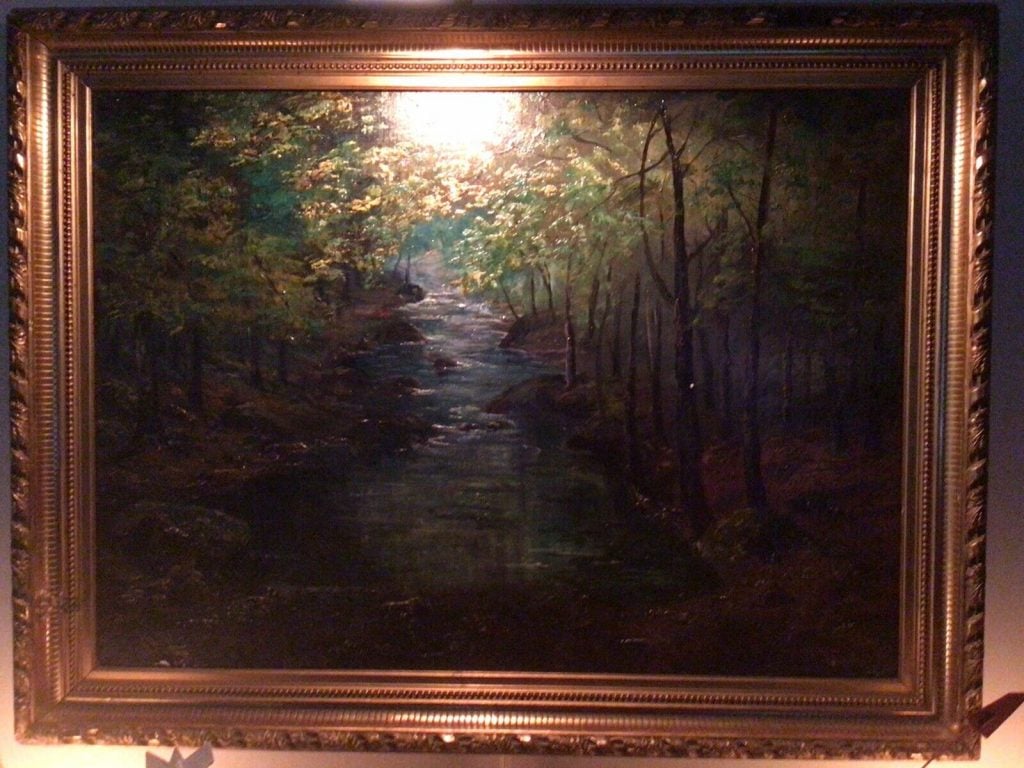Art & Tech
A.I. Flags Renoir and Monet Works As Fakes
The works are among 40 supposed counterfeits flagged by Art Recognition software.

The works are among 40 supposed counterfeits flagged by Art Recognition software.

Holly Black

Fake artworks supposedly painted by Impressionist masters Claude Monet, Pierre-Auguste Renoir, and Vincent van Gogh are being sold on eBay, according to an expert art authenticator. Carina Popovici, CEO of Art Recognition, claims to have identified as many as 40 forgeries on the online auction platform using her company’s advanced A.I. software, and suggests there are many more out there.
Unlike traditional authentication that is undertaken by a human expert in the presence of the artwork, Art Recognition uses machine learning and vast collections of digital images to make judgements. After downloading a variety of pictures, Popovici discovered that a supposed Monet, titled Forest With a Stream and with a price of $599,000, was almost certainly counterfeit.
Nevertheless, the seller stated in the listing that, “I fully guarantee that the painting is an original 1867 oil on canvas signed and dated by Monet. The painting is not in perfect condition, and I do not have any provenance beyond me having it for over 20 years.”
“Buyers on eBay deserve respect and that the items sold to them should be properly authenticated,” Popovici said via email. “Furthermore, it’s important to remember that eBay profits from these transactions through commissions, which could be seen as benefiting from potentially illicit activities.”
Other works identified by Art Recognition as fakes include a piece described as a study by Renoir and listed for $325,000, a sketch of Starry Night attributed as an authentic Van Gogh for $100,000, a $30,000 painting titled Dancing Girls attributed to Edgar Degas, as well as a seascape scene said to be by Rembrandt and priced at $33,750. Many of the listings have been removed by the sellers or marked as sold.
Popovici said that she has repeatedly contacted eBay offices in the U.K., Germany and the U.S. since December 2023 to alert the company to these issues, but she is still awaiting a response.
An eBay spokesperson told the Guardian that the sale of “counterfeit items is strictly prohibited on eBay, and we are committed to ensuring that goods sold on our platform are authentic.”
While the company attests to using “multiple layers of A.I. technology, professionally trained eBay investigators, and buyer protection programs,” leading to proactively blocking millions of listings a year, such efforts are arguably more attuned to counterfeits of major fashion brands and electronics, rather than individual works of art.
According to Popovici, what sets Art Recognition’s A.I. apart is the fact that it is trained by art historians.
“They play a critical role by cross-validating every data image used in our algorithm against the most reliable sources available for a specific artist, with catalogues raisonnés serving as the gold standard,” she explained over email, adding that art historical expertise is essential for developing “contrast sets.” These are collections of data that include negative examples, such as works by an artist’s followers, their workshop, associated school, contemporary artists influenced by them, as well as modern imitations and digital forgeries produced by generative A.I. in the artist’s style.
“This strategy helps our A.I. distinguish between authentic artworks and deep fakes,” Popovici said.
The issue of attribution, as well as outright forgery, is hardly new in the art world. Wolfgang Beltracci famously fooled multiple experts with hundreds of paintings attributed to the likes of Fernand Léger, Max Ernst, and Heinrich Campendonk, before receiving a six-year prison sentence.
More recently, Catalan police broke up a crime ring accused of selling multiple Banksy fakes. The question of whether an established work of art is truly by a master’s hand can also cause outright scandal, as was the case with the disputed Leonardo, known as the Salvator Mundi.
Art Recognition is one of several A.I. companies leading the way when it comes to verifying works of art, often collaborating with industry experts to offer its services. However, such results are still far from conclusive, particularly as many artists go one to develop their style and technique.
In a recent case, an A.I. model developed by Hassan Ugail of the University of Bradford, which uses facial recognition, “undoubtedly” determined that a work known as the de Brécy Tondo was by Raphael. However, Art Recognition attested that it was 85 percent probable that the work was by a different hand.
“Our mission remains focused on contributing to the integrity of cultural heritage through fine art authentication,” said Popovici. “Now, more than ever, it is imperative to stress the significance of adhering to rigorous scientific standards. Otherwise, the entire field of A.I. could face criticism, and we would all suffer the consequences.”